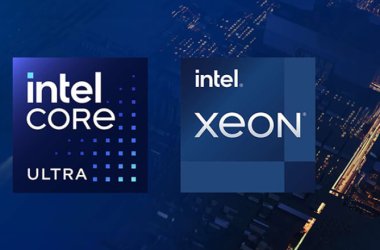 SeaMicro has crammed 768 Atom processor cores into its latest low-power SM10000-64HD server in an effort to provide a quick response time to Web transactions while saving energy.
SeaMicro has crammed 768 Atom processor cores into its latest low-power SM10000-64HD server in an effort to provide a quick response time to Web transactions while saving energy.
“Web transactions are usually processed through data centres, which are dominated by x86 server chips such as Intel’s Xeon and Advanced Micro Devices’ Opteron. But there is a growing interest in low-power netbook chips such as Atom for Web and ad serving, which are small in size but higher in volume,” said Andrew Feldman, CEO of SeaMicro. The Atom chip is also based on the x86 instruction set.
“Every chip is good at slightly different things. This is particularly good and efficient at Web processing and Internet traffic,” Feldman said.
“Many cloud-based workloads are more about moving data from storage to the Internet, which requires modest amounts of processing,” said Nathan Brookwood, principal analyst at Insight 64. SeaMicro’s approach is to deliver better performance-per-watt through a larger number of Atom chips.
“If you have to move 10 blocks of data, you don’t need a powerful processor to do that,” Brookwood said.
Companies also have to be mindful of the caps set by utilities on the power that can be used in data centres.
“It is possible to process cloud transactions on Xeon by creating giant threads using virtualisation, but Atom could be more power-efficient with its smaller cores,” Brookwood said. SeaMicro may not even bother about creating multiple virtual machines on each processor core.
“The SM10000-64HD is an upgrade from the company’s earlier 512-core Atom server called SM10000-64, and will offer more performance relative to power consumption,” SeaMicro’s Feldman said. The server performs 1.5 times faster while consuming 1.25 times more power. The server uses dual-core Atom N570 chips, which run at a clock speed of 1.66GHz.
“The server’s power and performance benefits come from adding more cores while reducing the number of components,” he added.
According to Feldman, the server has 64 motherboards, which is the same as the earlier server, with the boards interconnected through a fabric that can transfer data at 1.5 terabits per second, in addition to which the server has 1.5TB of RAM and includes storage and Ethernet switching. The server, which is 17.5 inches (0.44 meters) tall, also contains a chip to secure cloud traffic.
Beyond Intel, SeaMicro is also considering using ARM processors in its servers. “It’s possible to mix ARM and Intel processors in one server, but ARM-based server chips that interest SeaMicro aren’t yet available,” Feldman said.
“The field is all Intel today because Intel has products. As a leader, the ball’s in Intel’s court,” Feldman said. But ARM’s arrival is a welcome change as it will bring competition to Intel, he said.
ARM processors are considered more power-efficient than Atom chips and go into most of the world’s smartphones and tablets. ARM, however, has virtually no presence in server installations, though the company sees an opportunity in the market. Marvell announced a 1.6GHz quad-core server chip based on ARM in November last year, and Calxeda has announced a low-power ARM-based server, though no availability date has been announced.
“ARM also faces a software challenge as most of the server software is written to work with x86 chips. Asking customers to recompile the code base is a big request to make,” Feldman said.
The SM10000-64HD server is available worldwide with prices starting at US$237,000.





